
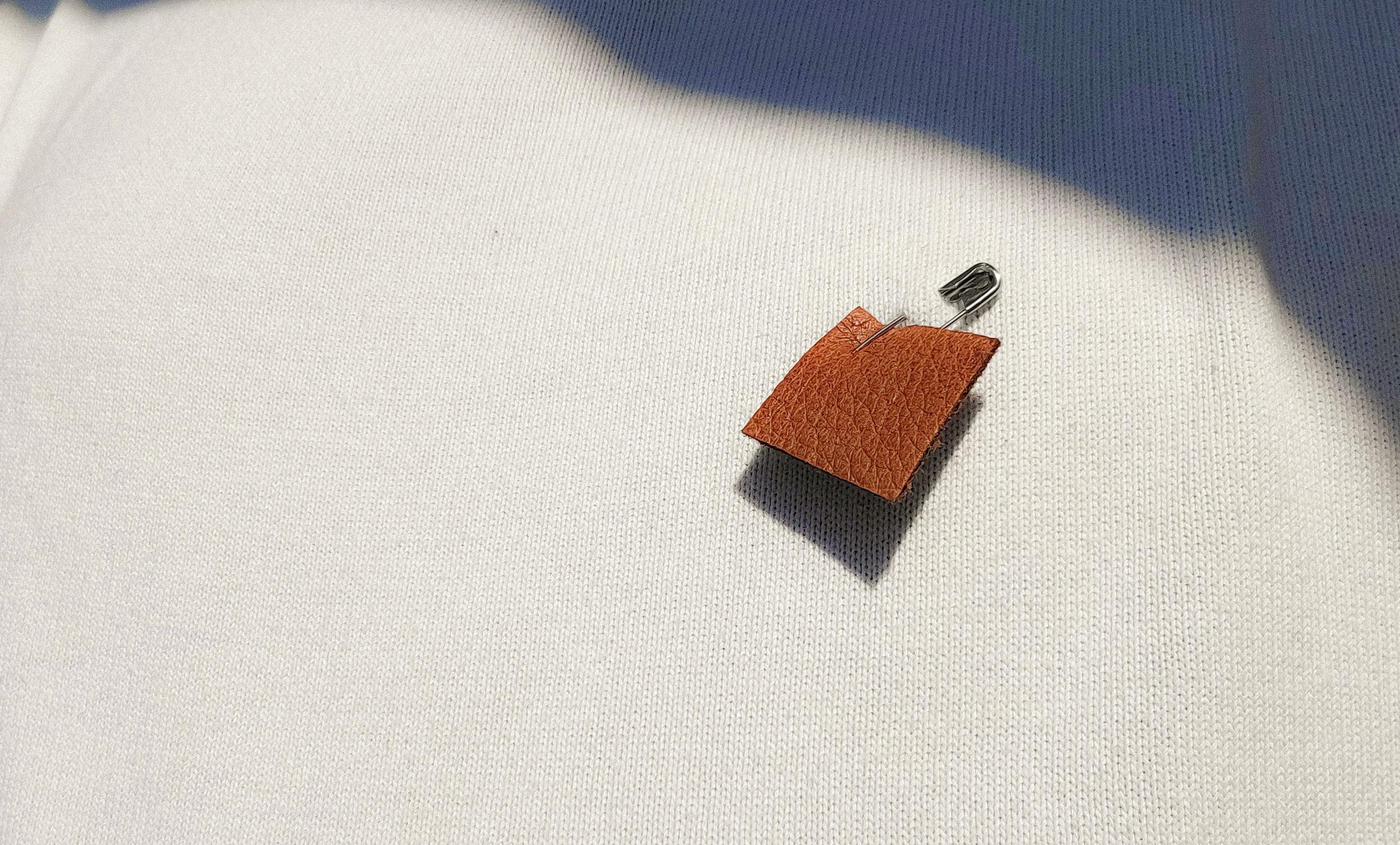


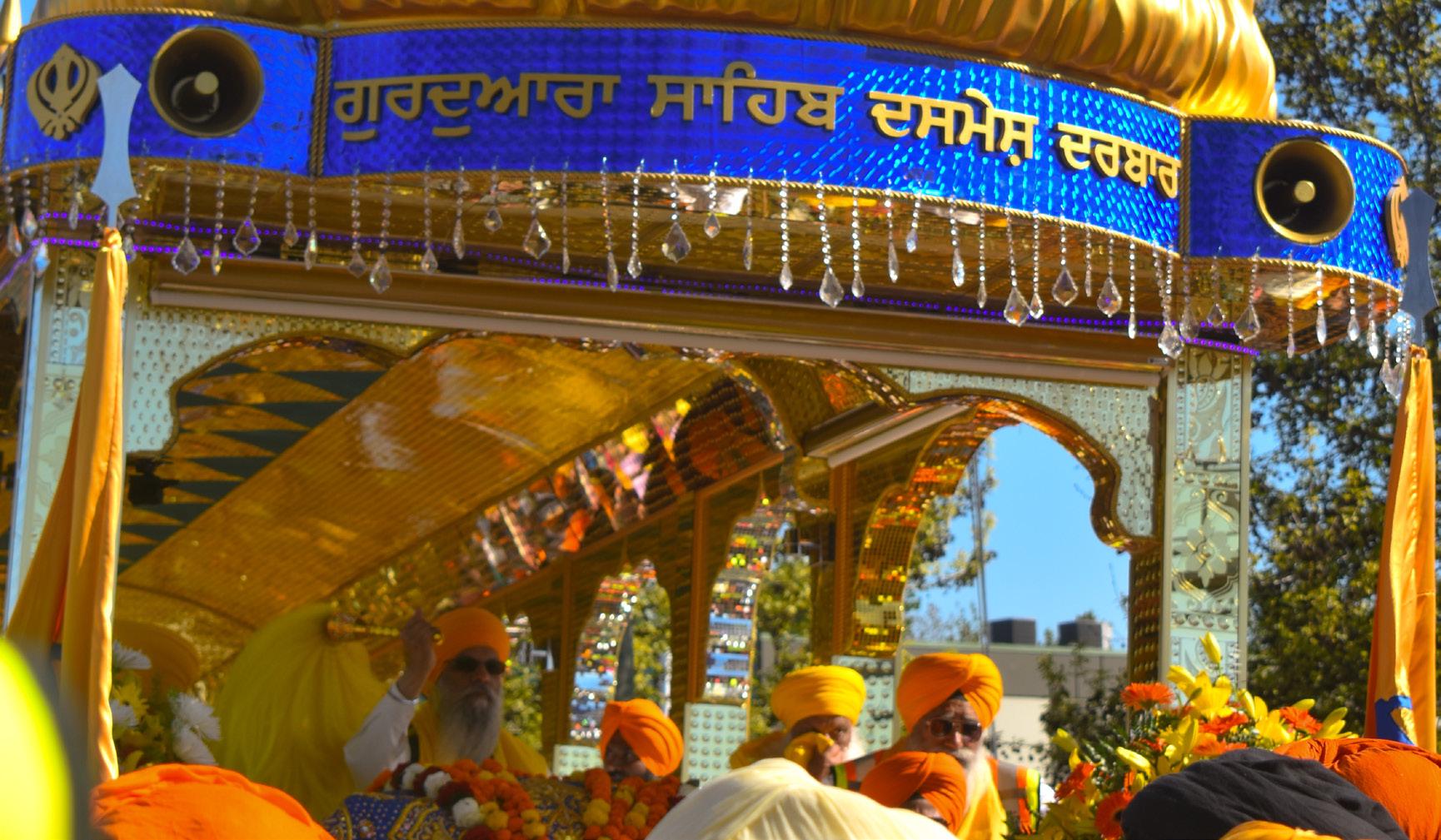

EDITOR-IN-CHIEF Petra Chase eic@the-peak.ca
COPY EDITOR Michelle Young copy@the-peak.ca
FACT CHECKER
Karly Burns factchecker@the-peak.ca
NEWS EDITOR Olivia Sherman news@the-peak.ca
NEWS WRITERS
Hannah Fraser and Yashita Dhillon
OPINIONS EDITOR
Olivia Visser opinions@the-peak.ca
FEATURES EDITOR
Daniel Salcedo Rubio features@the-peak.ca
ARTS & CULTURE EDITOR
Izzy Cheung arts@the-peak.ca
HUMOUR EDITOR C Icart humour@the-peak.ca
STAFF WRITERS
Hailey Miller, Kaja Antic, and Yasmin Hassan
BUSINESS MANAGER
Yuri Zhou business@the-peak.ca (778) 782-3598
PROMOTIONS MANAGER
Juliana Manalo promotions@the-peak.ca
PRODUCTION & DESIGN EDITOR
Abbey Perley production@the-peak.ca
ASSISTANT PRODUCTION EDITORS Minh Duc Ngo and Josh Ralla
PHOTO EDITOR Gudrun Wai-Gunnarsson photos@the-peak.ca
WEB MANAGER
Subaig Bindra web@the-peak.ca
MULTIMEDIA EDITOR
Emma Ciprian
ASSISTANT MULTIMEDIA EDITOR Quinn Masselink
DISTRIBUTION COORDINATORS
Anastasia Shatska and Michelle Leung
BOARD OF DIRECTORS
Emma Jean, Payal Raj, Olivia Visser, and Yuri Zhou
CONTRIBUTORS
Cliff Ebora, Prerita Garg, and Peter Runn
PEAK ASSOCIATES
Amirul Anirban and Amrit Kamaal
COVER ARTWORK Gudrun Wai-Gunnarsson
STAY CONNECTED
The Peak MBC2900 8888 University Dr. Burnaby, BC V5a 1S6 (778) 782-5110


Follow us on Instagram, at @thepeakatsfu and check out our YouTube channel, The Peak (SFU).
READ THE PEAK
Find extended and cited articles at the-peak.ca Download digital issues at issuu.com/peaksfu
The Peak is the official weekly student newspaper of SFU and is published every Monday. We’re funded by a student levy and governed by a Board of Directors. Any SFU student can apply to become a writer or editor.
We reserve the right to edit submissions for length, as well as style, grammar, and legality. We also reserve the right to reprint submissions at any time, both in print and on web. We will not publish content that is sexist, racist, or otherwise prejudiced.
We acknowledge that The Peak’s office is located and our paper is produced, distributed, and read on the Unceded Coast Salish Territories of the xwməθkwəy̓əm (Musqueam), səlilwətaɬ (TsleilWaututh), Kwikwitlem (Coquitlam), Kwantlen, Katzie, Semiahmoo, and Skwxwú7mesh (Squamish) Peoples. Unceded means that this land was never surrendered, relinquished, or handed over in any way. We recognize that the unceded land that we occupy includes not only the SFU Burnaby campus, but extends to the land occupied by the Vancouver and Surrey campuses as well.
to The Peak!
Volume 177, Issue 4 Not saying skibidi toilet since 1965 Moose Hide Day advocates against gender-based violence NEWS 04 Connections is creating division in my family HUMOUR 12 I’m sick of wellness influencers OPINIONS 05 Surrey’s Sikh Nagar Kirtan gathers community ARTS
11 Building better streets for those who walk or ride FEATURES 07
& CULTURE
THE PEAK PUBLICATIONS SOCIETY
TERRITORIAL ACKNOWLEDGEMENT the-peak.ca All SFU students can contribute and get paid for work that is published in The Peak! Email us at promotions@the-peak.ca to learn about writing, illustrating, or taking photos for us!
ABOUT US
Contribute
Local banner drop critiques TMX pipeline
Climate Convergence Metro Vancouver sparks discourse on controversial infrastructure
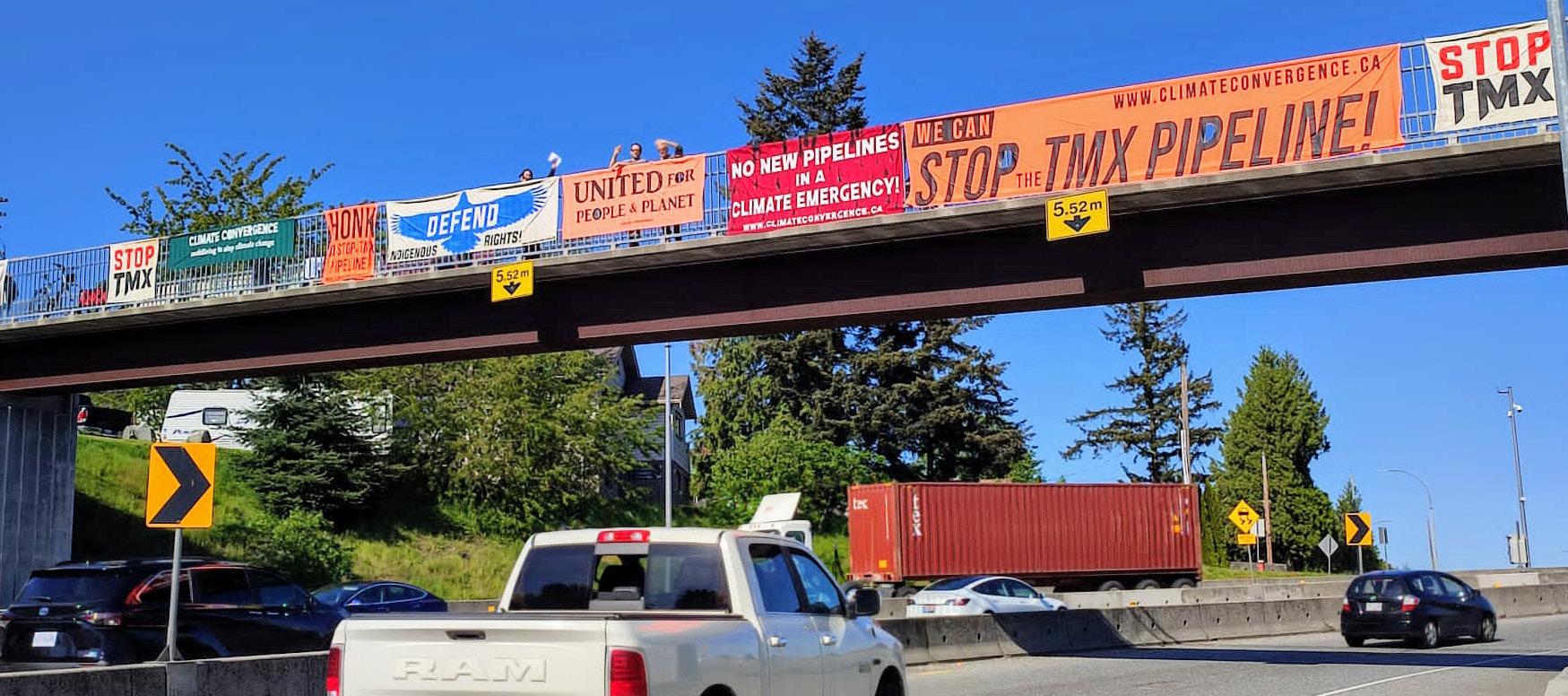
The pipeline project — which is now tens of billions of dollars over budget — has been resisted by Indigenous communities and climate activists since its announcement in 2013.
KAJA ANTIC · STAFF WRITER
On Wednesday May 8, grassroots group Climate Convergence Metro Vancouver organized a banner drop in New Westminster. This was to protest the recent Canada Energy Regulator (CER) decision to approve operations for the Trans Mountain Pipeline (TMX) expansion, which has its western terminus at the foot of Burnaby Mountain. The Peak sat down with Alison Bodine, a central organizer for Climate Convergence, to learn more.
“The CER is a government agency. The Trans Mountain Pipeline Corporation that built the pipeline is a Crown Corporation,” Bodine said, meaning a government owned corporation. “As far as oversight, it’s the government giving the government approval.”
Bodine first got involved with Climate Convergence in 2015, while the news of the TMX expansion project was still fresh. The group works to unite volunteer organizations locally, nationally, and internationally, to build a stronger climate justice coalition overall. “I really believe that we can all make individual changes to impact our lives or the lives of our community. But really, we need to work together and have organizations that can help mobilize masses of people to build a mass movement in defense of Mother Earth.”

“It is not safe to operate. They are not prepared for spills. They’re not prepared for fires on Burnaby Mountain,” Bodine said. To combat this, a new fire hall was built on Burnaby Mountain on University Drive. In the case of a fire near the Trans Mountain tank farm, the new location would save time for an emergency response.
Despite over a decade of protests, the government approved the pipeline’s operation, and in 2020, the Supreme Court of Canada rejected an application from the Squamish Nation, the Coldwater Indian Band, and the Tsleil-Waututh Nation to stop the expansion. Protests against its impending operation continue, Bodine asserted.
The Sacred Trust initiative of the Tsleil-Waututh Nation has been advocating against the pipeline since 2011. They say that “the Tsleil-Waututh Nation has a sacred, legal obligation to protect, defend, and steward the water, land, air, and resources of our territory.” They found in a report that the increased risk of spills, the logistics of spill clean-up, and the effect of the pipeline on cultural activities “does not represent the best use of Tsleil-Waututh territory.”
“We wanted to have this banner drop to demonstrate, first of all, to bring people together to say: ‘this fight, we’re continuing it.’” She added, “The world can’t handle the greenhouse gas emissions that Canada is facilitating through building this pipeline.”
Council Chats
The pipeline is meant to transfer diluted bitumen from tar sands in Alberta to the Burrard Inlet. Spills of this oil in the US in recent years have been very difficult to clean up due to the varying densities of the substance.
Those against the project argue it’s dangerous to residents of Burnaby Mountain, including SFU. In 2021, The Peak reported on the risk of fires and that the “expansion” of tank farms puts “larger tanks between the already existing ones.” Therefore, “any existing buffer space that was built originally to prevent the spreading of a potential fire from one tank to another will be compromised,” and makes it easier for any potential fires to spread. This is only one aspect of the pipeline, as other concerns centre around danger to wildlife and climate change.
“The top climate scientists in the world tell us [climate action is] urgent, tell us change needs to come quickly. We do have a sense of urgency, and that calls us to the streets,” Bodine said. She also mentioned the recent banner demonstration gained support from drivers passing by, as well as street actions through a postcard campaign, and virtually through their social media pages.
“There’s space in the Climate Justice Movement for everyone from many different backgrounds to participate in. There’s different ways to be involved. Street actions, banner drops, webinars. But now is the time, and we need everyone to get involved in some capacity,” Bodine said. “We know the real solution is that we put the needs of people before those of profit and that we demand that of the government of Canada.”
Various committee elections held to kick off the summer semester
On May 15, The Peak attended the bi-weekly Simon Fraser Student Society (SFSS) Council meeting via Zoom. The meeting involved committee elections and an announcement that Council meetings would be offered hybrid-style for better engagement among councillors.
Elections for committee positions
Elections were held to appoint councillors to the accessibility committee, equity and sustainability committee, Vancouver campus committee, and an “SFSS restructuring working group.”
While 11 other committee elections were supposed to take place, these elections were postponed to the following meeting as some nominated councillors hadn’t yet completed their mandatory membership forms. The elections that took place automatically assigned councillors onto the committees without a need for voting. There are a certain number of seats available on each committee, and because no extra nominations were called, each seat was filled with no need for a formal election. The elections that took place are as follows:
The accessibility committee monitors how the Student Society Accessibility Fund is spent, recommending changes to policy relating to accessibility. Sam Killawee, vice-president internal and organizational development, nominated Rishu Bagga, vice-president university and academic affairs, to the committee, which Bagga accepted. Bagga then nominated Ariana Shamsuddin, molecular biology and biochemistry representative, to which she accepted. No other nominations were brought forward, so Bagga and Shamsuddin automatically joined the committee.
The equity and sustainability committee works to “dismantle intersecting forms of systemic oppression” by platforming “historically-excluded students in the community at SFU.” Selfnominations came from Grayson Barke, environmental science representative, Jasleen Dhami, gender, sexuality, and women’s studies representative, and Maryam Niaz, biomedical physiology kinesiology representative. Chloë Arneson, vice-president equity and sustainability, also nominated Bagga. Barke, Dhami, Niaz, and Bagga all automatically joined the committee.
One representative from each constituency group, such as SFU350, a group representing climate justice issues, and the Simon Fraser Public Interest Research Group (SFPIRG), an independent student society representing social justice issues are also automatically part of this committee. Emmanuel AnthonyOnuigbo, Students of Caribbean and African Ancestry (SOCA) representative, retracted his self-nomination due to automatic membership. Since SOCA is a constituency group, AnthonyOnuigbo was already a member of the committee.
The Vancouver campus committee focuses on “issues affecting students at the Vancouver Campus,” giving Council “formal recommendations and reports” around campus engagement.
Chitransh Motwani, vice-president events and student affairs, Pranay Ratan, data science representative, and Arneson all selfnominated and joined the committee.
Councillors were also nominated for a “working group,” made for the SFSS to “review and modernize its current model to improve the structure of its organization and serve the student body more efficiently.” Meha Sidhu, the business administration representative, and Landy Liu, the chemistry representative, both joined the working group as nominated by Killawee. Shoron Alam, health science representative, self-nominated and also joined the committee.
3 May 27, 2024 NEWS
HANNAH FRASER NEWS WRITER
COMBATING CLIMATE CHANGE
PHOTO: @CLIMATE604 / TWITTER
Independent Jewish Voices calls to reject IHRA definition of antisemitism
They challenge the conflation of criticism of Israel with antisemitism
YASHITA DHILLON · NEWS WRITER
OLIVIA SHERMAN · NEWS EDITOR
Independent Jewish Voices Canada (IJV) is urging the BC government to reject the International Holocaust Remembrance Alliance’s (IHRA) definition of antisemitism in its updated anti-racism legislation. IJV is an organization that describes itself as working to reaffirm human rights, who “oppose any attempt by the Israeli government to impose its own solutions on the Palestinians” and “amplify the voices of Canadian Jews in support of justice.” The Peak spoke with Sid Shniad, a founding member of IJV and an executive member of its Vancouver chapter.
The new legislation, which was tabled on April 11, aims to “hold public bodies accountable for addressing systemic racism in policy and programs.” In an open letter, IJV noted the necessity of fighting against antisemitism. However, IJV opposed the inclusion of IHRA’s definition of antisemitism, specifically its inclusion of Israel. On their website, IJV notes “the fight against antisemitism is undermined when principled opposition to unjust Israeli government policies and practices — including those that contravene international law — are branded as antisemitic.”
On April 30, the Gaza Ministry reported that over 34,000 Palestinians have been killed by Israel, the highest rate of death in any conflict in the 21st century. Despite numerous calls for a easing of violence and the release of the Israeli civilians still held hostage, Israeli Prime Minister Benjamin Netanyahu rejected a ceasefire, which the International Criminal Court (ICC) and the United Nations consider a genocide of the Palestinian people.
Despite Netanyahu’s denial of intentional starvation of the Palestinians, shipments of aid have been fractional and nationalists have been caught damaging and destroying aid to Gaza.
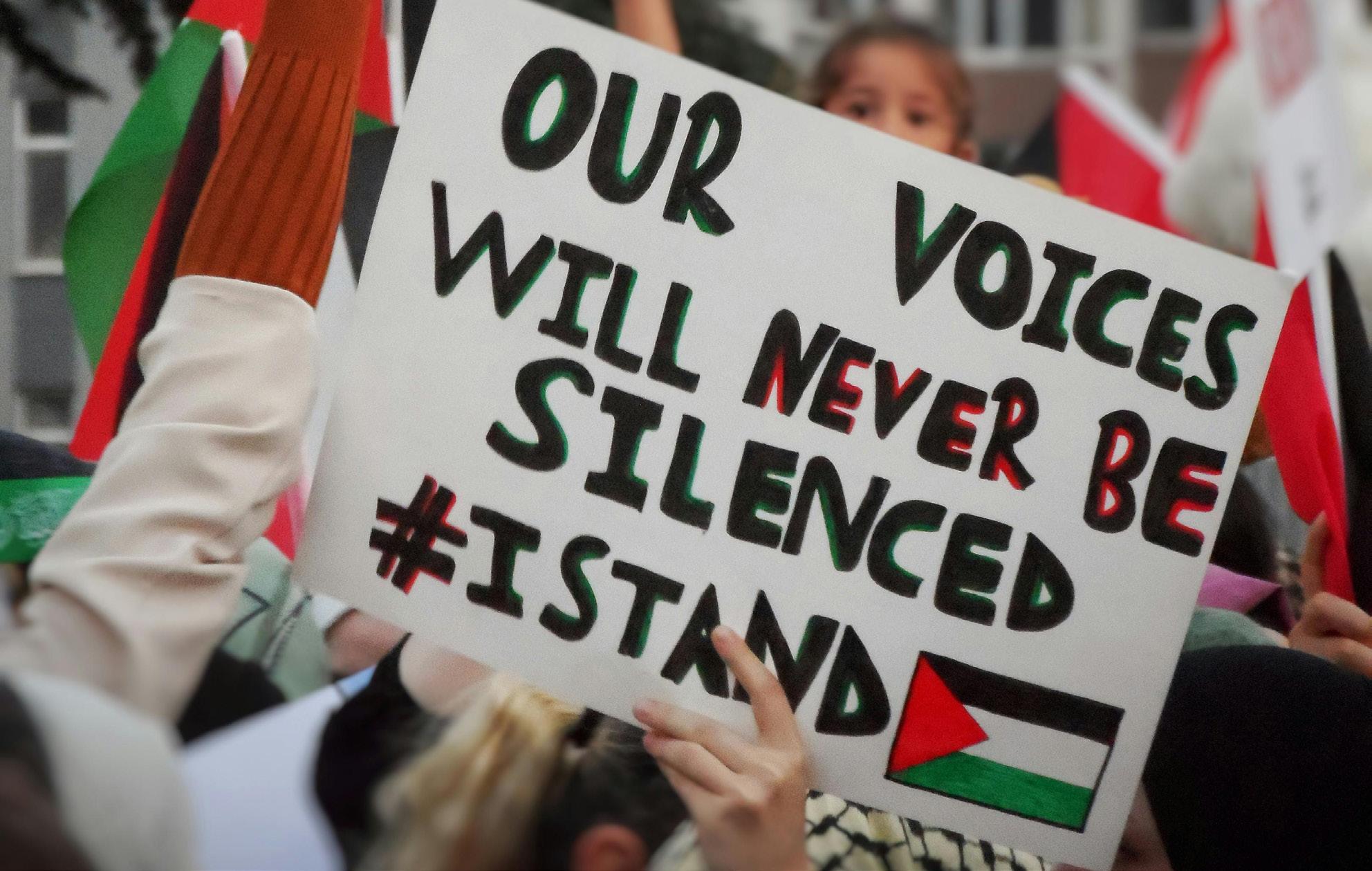
The IHRA gives examples of antisemitism such as, charging “Jews with conspiring to harm humanity” and “calling for, aiding, or justifying the killing or harming of Jews in the name of a radical ideology or an extremist view of religion.” Other examples include Holocaust denial and the usage of conspiracy theories, such as the world Jewish conspiracy that assumes Jewish people control the media, politics, and the economy.
While IJV “does not object to resisting antisemitism,” IHRA definition of antisemitism includes 11 examples of statements that could be seen as antisemitic, with six of them relating to Israel. Shniad explained how this “emphasizes the issue of Israel, and support for Israel, and shield[s] Israel from criticism.” He said, “It’s a thinly disguised form of defending Israel rather than addressing antisemitism,” Shnaid said.
Kenneth Stern, one of the original drafters of the IHRA definition, has also criticized its current use. “Stern has warned explicitly that right-wing Jews who are supporting Israel have weaponized the issue of antisemitism in support of Israel, and he urges governments and institutions not to adopt it for that reason,” Shniad said.
“It’s important to understand the difference between criticism of Israel and criticism of Zionism and antisemitism,” said Shniad. Zionism is a nationalist movement aimed to create a Jewish homeland in Palestine. Both historically and currently, this involves the mass expulsion of Palestinians from their
Moose Hide Campaign Day combats violence against Indigenous women and children
Empowering Indigenous women and girls one pin at a time
HANNAH FRASER NEWS
WRITER
Content warning: references to missing and murdered Indigenous women and girls, and residential schools.
May 16 was Moose Hide Campaign Day, a day organized by the “BC-born Indigenous-led grassroots movement to engage men and boys in ending violence towards women and children.” Seeing the rise of Indigenous women and children who have faced violence in Canada, the campaign has been working for over 10 years using “Indigenous ceremony and traditional ways of learning and healing” to raise awareness. The Peak corresponded with Omar Karim, national director for post-secondary engagement initiatives, for more information.
The campaign started in 2011 when founders Paul and Raven Lacerte were hunting moose in the Carrier territory “along the Highway of Tears in Northern BC, where so many women have gone missing or been murdered.” They thought about how to “repurpose the hide for social innovation,” Karim said. The hide represents “a little piece of land medicine” for domestic and gender-based violence. “Wearing the pin signifies your commitment to honour, respect, and protect the women and children in your life and speak out against gender-based and domestic violence,” reads the Moose Hide Campaign website.
“The first of 25,000 pins were cut by Raven and her sisters,” and the campaign has now created “over five million to six million moose hide pins distributed across this country.”
According to the campaign, the hide is sourced from moose hunted for food and ceremony by traditional hunters, or from moose who have already died. “No animals are hunted specifically to supply hides for the Moose Hide Campaign,” the organization said. Synthetic pins are also available.
The campaign also focuses on educating “Indigenous and non-Indigenous men and boys” to stand up “against violence towards women and children” by “addressing negative masculinity.”
According to the Assembly of First Nations, Indigenous women and girls are four times more likely to be victims of violence at some point in their lives than non-Indigenous women. Over half of Indigenous women have suffered physical assault at some point in their lives, while 46% have reported sexual harassment or assault. This is due to a number of intersecting factors including systemic racism, misogyny, and the long-term impacts of colonialism, such as intergenerational trauma from residential schools. Indigenous groups like the Moose Hide Campaign are calling to action against the rise of missing and murdered Indigenous women and girls (MMIWG).
“We say that it’s an act of reconciliation when you wear the pin,” said Karim. “We encourage members to fast as a form of sacrifice to honour the people in your lives.”
The “grounding tradition” of hunting the moose for cultural purposes was knowledge passed “from one generation to the other, something the residential school system tried to erase.”
homes, pushing them further into the allocated areas for Palestinians: the Gaza Strip and the West Bank. The largest expulsion was after the creation of Israel in 1948, an event referred to as the Nakba, which is Arabic for “catastrophe.”
“Israel and its supporters want to make sure they make it difficult, if not impossible, for people to criticize or organize opposition to Israel and what it’s doing and that’s what the IHRA definition is all about,” Shniad said. “I want to feel free to criticize Israel the same way I criticize any other state.” Other definitions, such as the The Jerusalem Declaration On Antisemitism note that “evidence-based criticism of Israel as a state” are not antisemitic.
Agencies like the ICC have condemned Israel’s actions, citing collective punishment of civilians for the actions of the militant group Hamas, and the intention to erase any cultural markings of Palestinian heritage. Shniad added, “Jews have certain legal rights in Israel that Palestinians who are born there do not.
“If you want to be a refuge for people, you have to be a refuge for all people” he said, as Israel is considered an apartheid state by many human rights organizations.
By challenging the IHRA definition, IJV aims to ensure that the struggle for Palestinian justice is not hindered by mislabeling it as antisemitism.

The campaign focuses on educating Indigenous communities, K-12, and post-secondary institutions, asking: “How do we educate and provide educational awareness about the campaign? About sharing love, care, compassion? About creating healthy and respectful relationships?”
“Our hope is that as people go through their next generation of their journey, that they can take that learning, that understanding and then create that change within their communities,” said Karim.
If you or someone you know is in need of support, visit The National Inquiry into MMIWG for a toll-free help line, resources, and outreach.
4 NEWS News Editor Olivia Sherman News Writers Hannah Fraser and Yashita Dhillon news@the-peak.ca
PHOTO: ŞEYMA D. / PEXELS
SHIELDING CRITICISM PROTECTIVE PINS
PHOTO: AMIRUL ANIRBAN / THE PEAK
The Met Gala shows us where celebrity priorities lie
It’s time for us to reconsider ours, too
YASHITA DHILLON · NEWS WRITER
Content warning: mentions of genocide and murder.
The Met Gala has always been about flaunting outfits and prestige, but it felt more surface-level than usual this year. As attendees walked the red carpet, protesters gathered outside, trying to draw attention to the ongoing genocide in Palestine.
On the same day as the Met Gala, “Israel called on Palestinians to leave eastern Rafah amid increasing global alarm about the consequences of an Israeli ground invasion of the city.” The announcement was brushed under the carpet as celebrities paraded around in expensive attire, posing for photos and doing interviews. Some celebrities who attended the Met Gala, such as Zendaya and Dua Lipa, have notably supported Palestine in the past. Yet, at this year’s event, they were silent.
The Met Gala is one of many examples that reminds us why we shouldn’t look up to celebrities as much as we do. For example, influencer Haley Kalil was asked to interview Gala attendees, and posted a video of herself lip-syncing to a TikTok audio clip that included the phrase “let them eat cake.” This is commonly attributed to historic French Queen Marie Antoinette regarding starving peasants, although she likely didn’t say this. Regardless of intention, while Palestinians in occupied territory are starving, it goes to show how little self-awareness some celebrities have when it comes to their privilege.
In response to this, a “celebrity block-out” movement has circulated on social media. People have decided to block celebrities who have been silent about violence against
HEALTH CHARLATANS
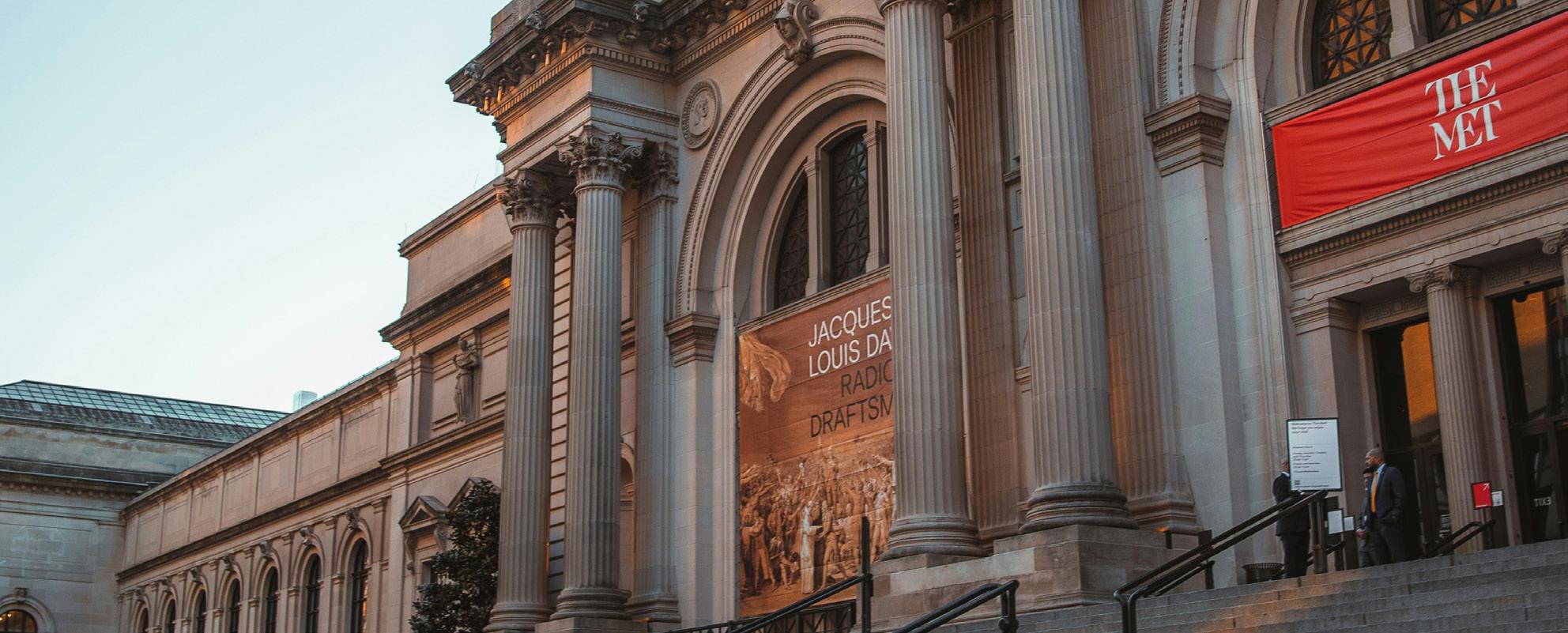
Palestinians, especially its escalation after the Hamas attacks on October 7, 2023. The goal is to reduce their engagement and the revenue they earn from posts to demonstrate that if you don’t use your platform to call attention to urgent issues, you will lose support. While there isn’t an official block list, Palestinian journalists like Bisan Owda shared a list on their social media, which included Ariana Grande, Taylor Swift, Harry Styles, and many more.
When celebrities choose silence over activism, they perpetuate the very systems of oppression that need dismantling.
It’s surreal to scroll through social media and see posts about people being killed and losing their homes, only to be followed by photos of celebrities flaunting designer gowns and suits. With all the attention given to these celebrity outfits and interviews, imagine how much awareness or money could be raised for Palestine if any of these figures spoke up. The price for a ticket to the Met Gala in 2024 was $75,000, and tables were at least $350,000. To think these people don’t have the power or resources to make a difference is fooling ourselves.
Wellness influencers should prioritize fact over fad
Nutrition is not black-and-white
OLIVIA VISSER · OPINIONS EDITOR
Content warning: discussions of diets and eating disorders.
In an effort to improve my health by reducing symptoms like fatigue and digestive discomfort, I recently began paying more attention to my diet. I know I don’t consume as much variety as I should, especially when it comes to protein and vegetables. So, I took to the internet to work on some food lists and meal plans. What I stumbled across was equal parts unsurprising and frustrating; many popular wellness influencers tend to have a very all-or-nothing approach to nutrition. Their advice often excludes those who can’t access certain foods for a variety of reasons, which encourages people to avoid small yet helpful nutritional changes because they worry it’s not enough.
One of the most concerning ideas perpetuated by wellness influencers is that health is one-size-fits-all. I call them “wellness influencers” because that’s what they’re colloquially referred to online — not because it’s entirely accurate. Most of these people don’t have relevant degrees or expertise, and are instead speaking from personal experience and research. While that’s not wrong in itself, it can open followers up to information that hasn’t been properly evaluated for bias and misinformation.
For example, I’ve been seeing a lot of posts about how seed oils (canola, sunflower) are unequivocally unhealthy and should be avoided at all costs. Many claim they’re full of “chemicals” from the production process, and contain high levels of omega-6 fatty acids which may lead to inflammation. As is usually the case with health claims, the truth is not black-and-white. Omega-6 acids are essential for our bodies and have never been proven to cause inflammation in human studies. They’re also a great affordable cooking oil option. It is true that many people are deficient in omega-3 fatty acids due to overconsumption of omega-6 acids. However, this doesn’t mean seed oils are disrupting people’s health. Consuming
foods like tofu, fish, and nuts can improve your omega-3 intake. Fortified foods, meaning foods with added vitamins and minerals, are also an option that may be more accessible and affordable to some.
Health is a process, not a state of being — and it looks different for everyone.
Don’t take broad health-related generalizations at face value — always double-check nutrition advice before following it, ideally from a peer-reviewed source or a doctor. You should also be wary of people who promote specific diets as the best option for “overall health.” Whether it’s veganism, keto, or the Mediterranean diet, nothing can universally reduce health concerns and make everyone feel great. As a vegetarian myself, I know my diet isn’t practical or effective for everyone, as much as I’d like it to be. When it comes to nutrition, research has found that “focusing on food quality” is key. This means integrating fruits and vegetables, whole grains, fats, and protein. Variety is important, but it’s also worth noting that whole foods aren’t cheap. People who flaunt their raw vegan diets on Instagram seem to forget that many people can’t afford fresh produce, or may not have the capacity to prepare it. You’re not “unhealthy” for relying on processed foods for financial, accessibility, or dietary reasons. Making nutritional decisions within your means is healthy. Eating frozen or canned fruits and vegetables can be just as nutritious as fresh, for instance. Health is a process, not a state of being
Celebrities influence culture, and those with the most influence can determine the status quo.
Our cultural obsession with celebrities can be harmful. It distracts us from more pressing global issues and encourages a culture of escapism. We need to hold celebrities accountable for their actions and inactions. With the power we give them, it’s not unreasonable to expect them to use their influence for good. When people choose silence over activism, they perpetuate the very systems of oppression that need dismantling. Celebrities are who they are because of their audience’s support, so expecting them to speak up for the right cause — something their audience believes in — is not unreasonable at all.
Some argue celebrities shouldn’t speak up about political issues because they aren’t educated and we should be looking to experts to speak on these topics. We need to stop using this as an excuse. It’s not difficult to stand against genocide — something the UN has already determined is taking place. It’s not that we’re looking to celebrities to provide in-depth analysis; we can turn to activists, scholars, and those with lived experience for that. It’s simply a matter of standing against human suffering, which everyone can do. Those who don’t use their platforms to mobilize such a huge population to care about an ongoing tragedy are making a conscious decision.
Social media ads are just one of the many ways celebrities earn money, and are often not their main revenue stream. The social media block-out movement is a great conscious effort that shows we’re starting somewhere. However, we also need to realize that the revenue earned from platforms like streaming services often supersedes the revenue from ads or social media. If we expect celebrities to put their money where their mouths are, maybe we should do the same.
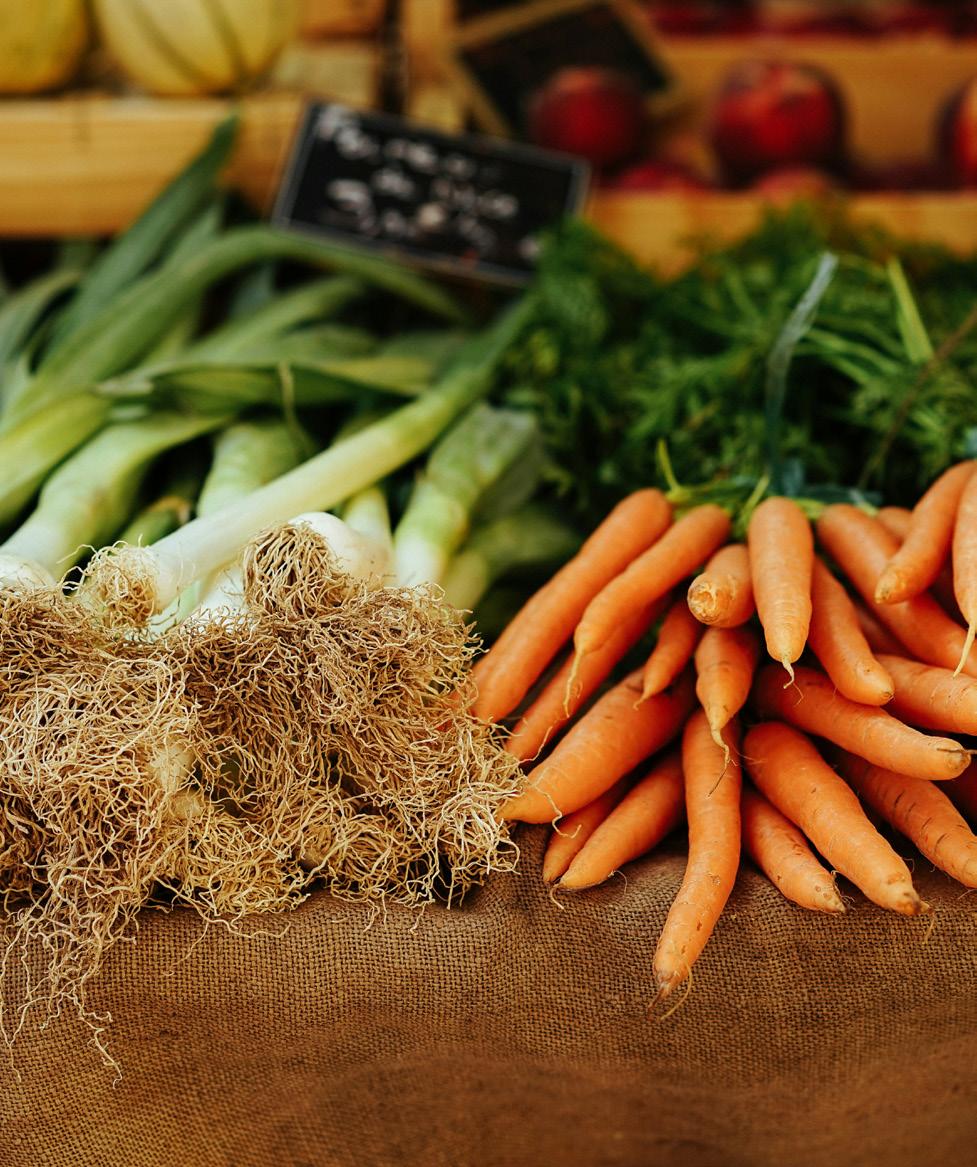
— and it looks different for everyone. Generalizing foods as being healthy or unhealthy can cause considerable mental harm. Moralizing what we eat can lead to food-related guilt or eating disorders. Healthy eating involves more than just the food you eat, and extends to your relationship with it. Foods aren’t inherently good or bad — enjoying a bowl of ice cream or a bag of chips doesn’t mean your diet is poor. Nutrition is a long-term process, and it’s all about variety and balance. At the end of the day, you’ll likely regret missing out on life’s little enjoyments more than you’ll regret eating a slice of cake at your friend’s birthday party.
If you do find yourself browsing wellness sites or social media pages, steer away from those who make universal claims or tell you to avoid a large number of ingredients altogether. Those worth listening to will acknowledge that health isn’t about being thin, wealthy, or able-bodied. They’ll recognize that moderation, variety, and enjoyment are more important than rigid notions of perfection. These people are not doctors, and if they were, they wouldn’t be spouting half the garbage they do.
5 May 27, 2024 OPINIONS
PHOTO: DIANE PICCHIOTTINO / UNSPLASH
CELEBRITY RESPONSIBILITY
PHOTO: PETER WENDT / UNSPLASH
Tenants in BC need better legal protection
Preventing bad faith evictions should be a priority
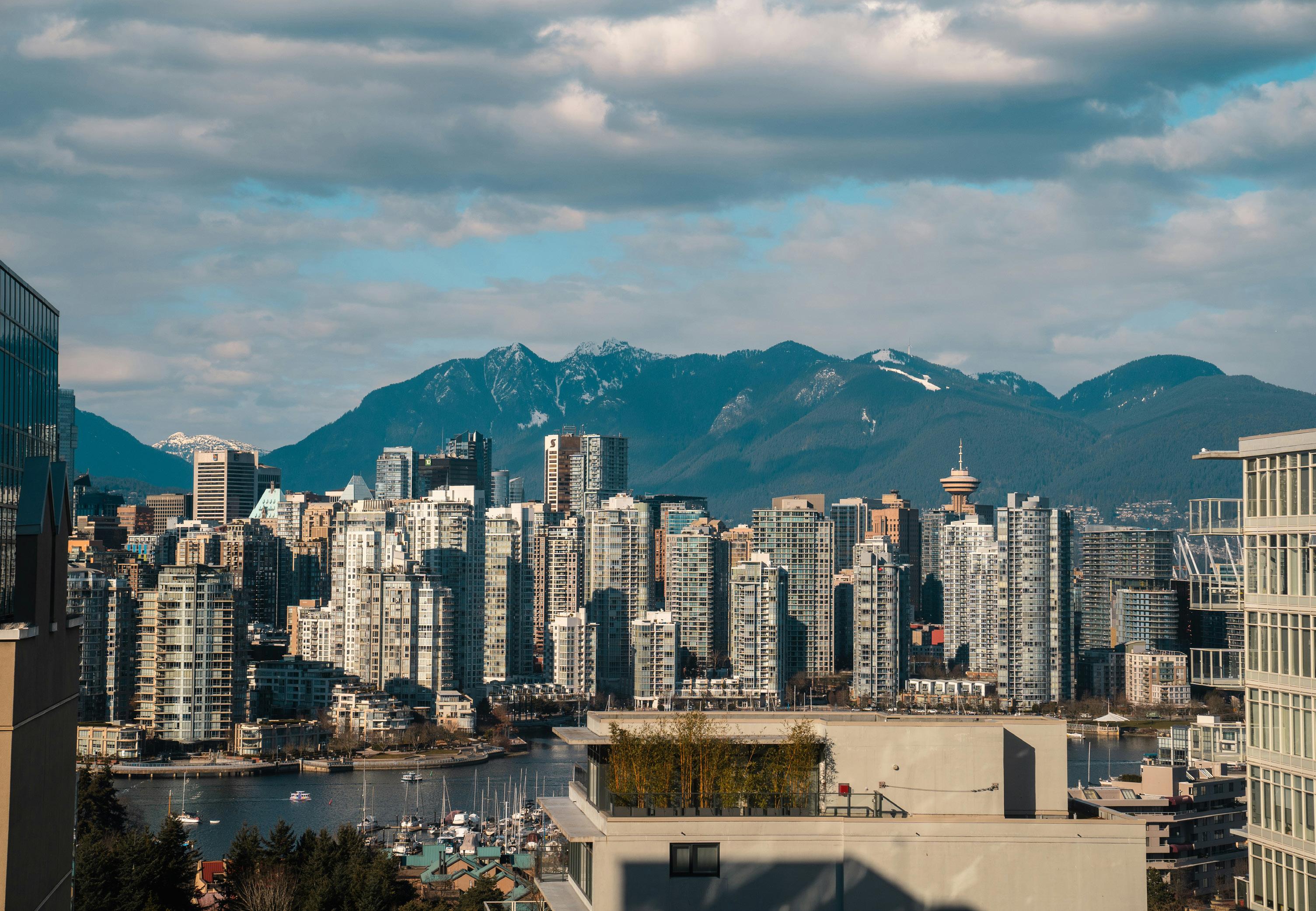
There’s a saying I’ve heard in Vancouver: “You can’t put a price on those mountains.” But landlords can and do. It costs two full-time minimum wage jobs to afford a bedroom in the Lower Mainland, and rent across BC “increased 30% from 2016 to 2021,” the largest jump of any province in Canada. While BC landlords’ yearly rent increase cap is 3.5% while tenants are living in a space, they can use loopholes to evade it. Rent caps don’t apply when a unit is vacant, so landlords make use of the only “legal” ways to evict contract-abiding tenants.
Housing is the last thing anyone facing the current affordability crisis should have to worry about — and yet, this is what many of BC’s vulnerable residents are facing. There has been meaningful movement from the BC government to prevent “bad faith” evictions, and more coming to effect this summer. However, more needs to be done to urgently shut lingering loopholes and protect renters.
One of the most common loopholes used by landlords is saying they or a family member is moving in, which is one of the only remaining ways to evict tenants. They either say this to evict them or have an excuse to coerce them into paying a much higher rent. The only condition is there is a penalty for bad faith evictions: landlords could owe tenants 12 months of their rent money if they’re found to have evicted them in bad faith — for example, lying that they’re going to move into the unit, then renting it out for a higher profit.
I was told by my landlord that if I didn’t agree to a substantially large (and illegal) rent increase, they would move their family member into my unit. While tenants have a right to refuse an illegal rent increase, I had no way to guarantee my landlord wouldn’t evict me if they didn’t get the price they wanted. Applying to file a complaint costs $100 and according to tenancy lawyer Robert Patterson, landlords have been able to evict tenants without “showing up for hearings.” The increase was way beyond my budget, but still slightly better than anything I could probably find in Vancouver’s outrageous rental
market. My hands were tied. This brings me to one of the main issues with existing legal protections: they fail to consider the unequal power dynamic between tenant and landlord.
We are just trying to survive and keep a roof over our heads, which is a basic right that shouldn’t be commodified in the first place.
I’m not saying homeowners can’t legitimately have family members who need a place to stay. As it stands, though, there needs to be measures in place that require accountability for their intentions so they can’t rely on empty threats. Increasing the penalty for bad faith evictions wouldn’t hurt, but Patterson’s recommendation is that there should be a “standard of proof” of a family member moving in before issuing an eviction. This could involve requiring official documentation stating a landlord’s intention for the space, and following up to ensure they’re being honest. Doing so would put more responsibility on the landlord, rather than putting the burden on renters to go through the work of educating themselves on their rights and paying the $100 fee to file a dispute within a 15-day period.
There is a financial penalty for evicting tenants deceptively. However, it’s not enough to stop it. Threatening the roof over someone’s head gives landlords the upper hand in negotiations, as most people would rather suffer another expense than find themselves at risk of being displaced. As lawyer Phil Dougan points out, “A landlord loses an investment; A tenant loses a home.”
Enforcing stricter regulations worked to reduce renovictions, which were previously done frequently to tenants when the landlord empties their unit just by saying they’re renovating. The law now requires much more thorough documentation. Yet, the burden of proof often falls on tenants when it comes to ensuring landlords are following through on their claims.
If renters are going to be displaced by no fault of their own other than not having the privilege of owning property, there at least needs to be better protection for vulnerable groups. One meaningful change in this direction that will be implemented this summer is households with babies cannot receive rent hikes. However, things are also especially dire for long-term renters like seniors, who are more likely to become houseless after an eviction. Unstable and unaffordable housing also significantly impacts disabled people, who have fewer housing options to meet their needs.
Landlords try to garner sympathy from their tenants by presenting their requests as something they had no choice in, because property taxes have increased and they have mortgages to pay off. However, it isn’t the responsibility of tenants to pay off your mortgage or property costs. We are just trying to survive and keep a roof over our heads, which is a basic right that shouldn’t be commodified in the first place.
Ultimately, preventing bad faith evictions is one piece in the puzzle of the disaster that is privatized housing. Systemic change is necessary to solve the housing crisis, like investing in more social housing and implementing harsher market restrictions. Ensuring affordable living should be a priority our government urgently addresses on numerous fronts.
There are free resources available for tenants, like tenants.bc.ca or Housing BC. Vancouver tenants can also get involved with Vancouver Tenants Union, a group that brings tenants together to leverage their collective power to advocate for their rights. Learn more about your rights as a tenant through their accessible resources, available in six languages.
6 OPINIONS Opinions Editor Olivia Visser opinions@the-peak.ca
PHOTO: ALEJANDRO LUENGO / UNSPLASH
LOOPHOLES
LANDLORD
PETER RUNN · SFU STUDENT

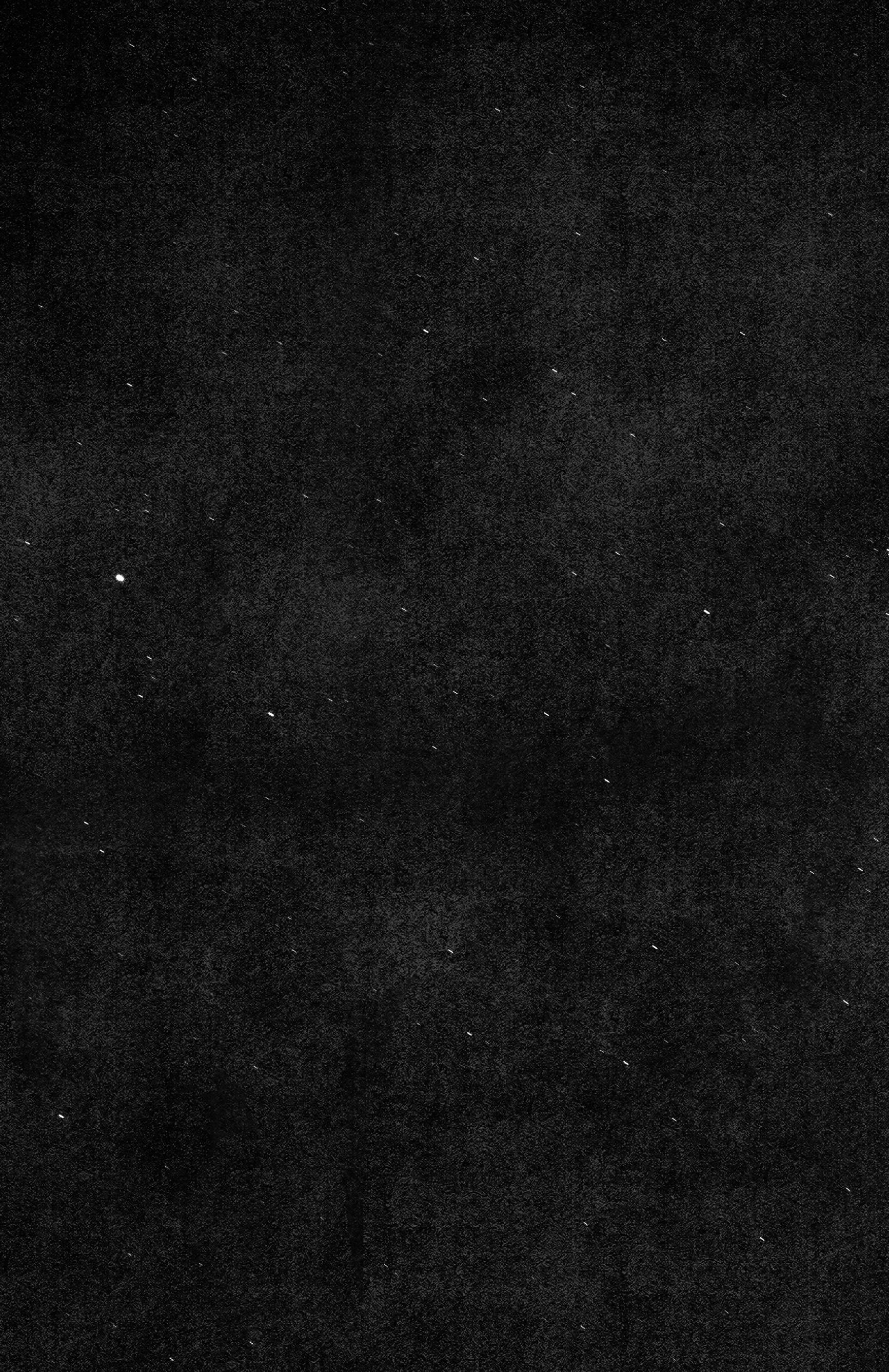
Explore the “ajeeb” in life with Asian Heritage Month at Morrow
Awe-inspiring art exhibits take the stage at this quaint art studio
HASSAN · STAFF WRITER
YASMIN
On an unassuming street in Vancouver, I found myself at Morrow, a hidden art studio. I went in on a Wednesday just to check the gallery out, but little did I know, I’d stumbled into the studio mid-rehearsal. Despite the fact that I walked in unannounced and uninvited, I had never felt more welcome in a space.
Ziyian Kwan, the artistic director for Morrow, Odd Meridian Arts, and producer for ahmm (Asian Heritage Month at Morrow), says “ahmm invites rupture, nurture, defiance, and bows in deep reverence, to all things queer. It’s a spirited and gently subversive multidisciplinary affair, including performances, workshops, and a gallery exhibit. A month of creative offerings that cultivate non-linear spaces of past, present, and future heritage.”
I had the privilege of seeing Ajeeb Ajeeb, a mixture of spoken word, sound, song, and movement, performed by incredible local artists Nhylar, Anjalica Solomon, and Panthea Vatandoost. Nhylar is a queer gender nonconforming storyteller, media artist, and poet born in India who is active in events such as VancouverPride and Queer Arts Festival. Anjalica is a genderfluid Desi musician, songwriter, poet, spoken word artist, and multidisciplinary performer based in Vancouver whose poetic work “seeks to proclaim the possibilities of love and resilience.” Panthea is an Iranian actor, director, creator, and founder of managing artistic director of Medusa Theatre Society, a non-profit devoted to “supporting and producing works that engage with the immigrant and refugee community, with a focus on the Middle East.”
Ajeeb, in Farsi, Urdu, and Hindi, means “strange, odd, familiar, and wonderful,” which perfectly describes the sensations that emanated from this performance; it felt like an exploration of life, a culmination of the experiences of the artists being a part of the Asian diaspora and feeling out of place.
The show started off with Solomon reading a poem, with the sounds of her voice being loop-peddled by an Rc505 loop station, creating an immersive sonic soundscape. After the opening poem, Nhylar began their segment of the show with a ritual, bridging the ceremony with the performance. The ritual felt like an immersive, interactive experience, making everyone in the space in some way whole and present.
Nhylar, after finishing their beautiful ritual, began reading out their poems. These poems ranged from various
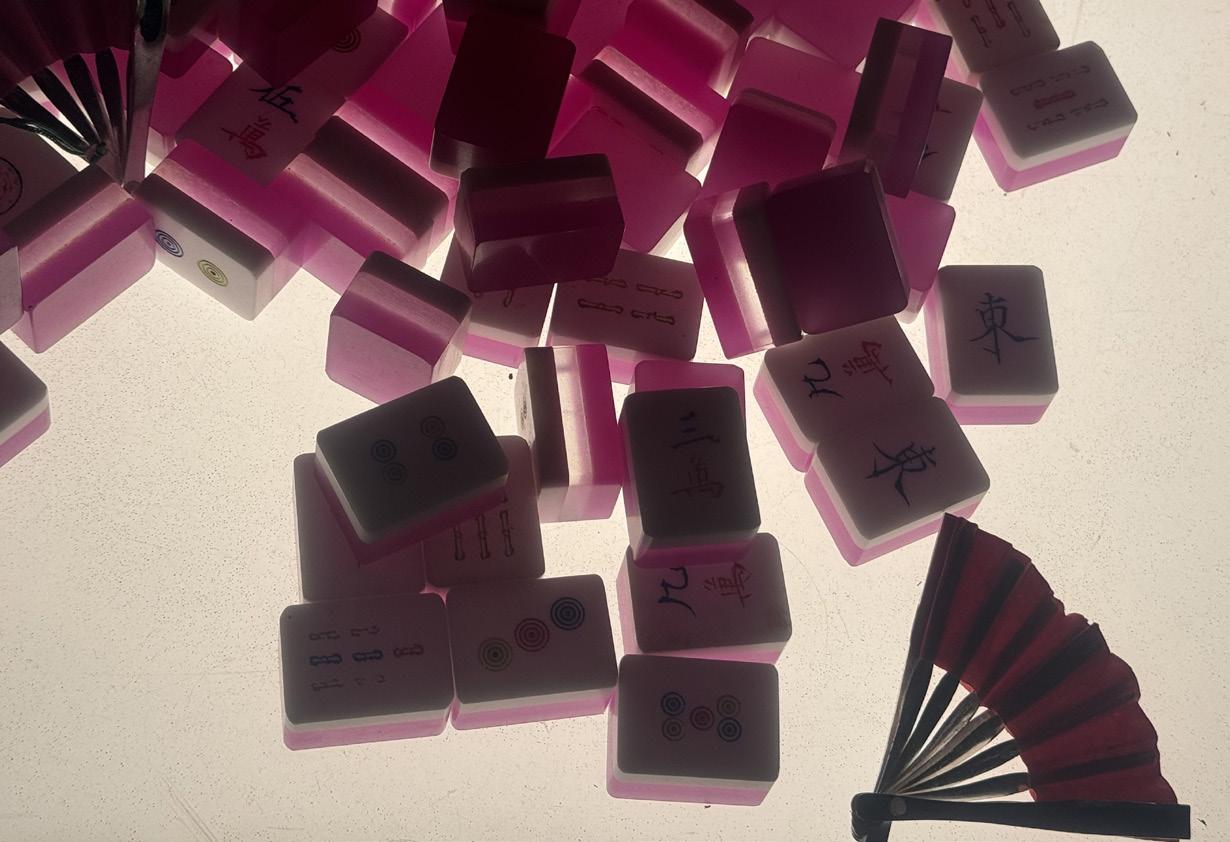
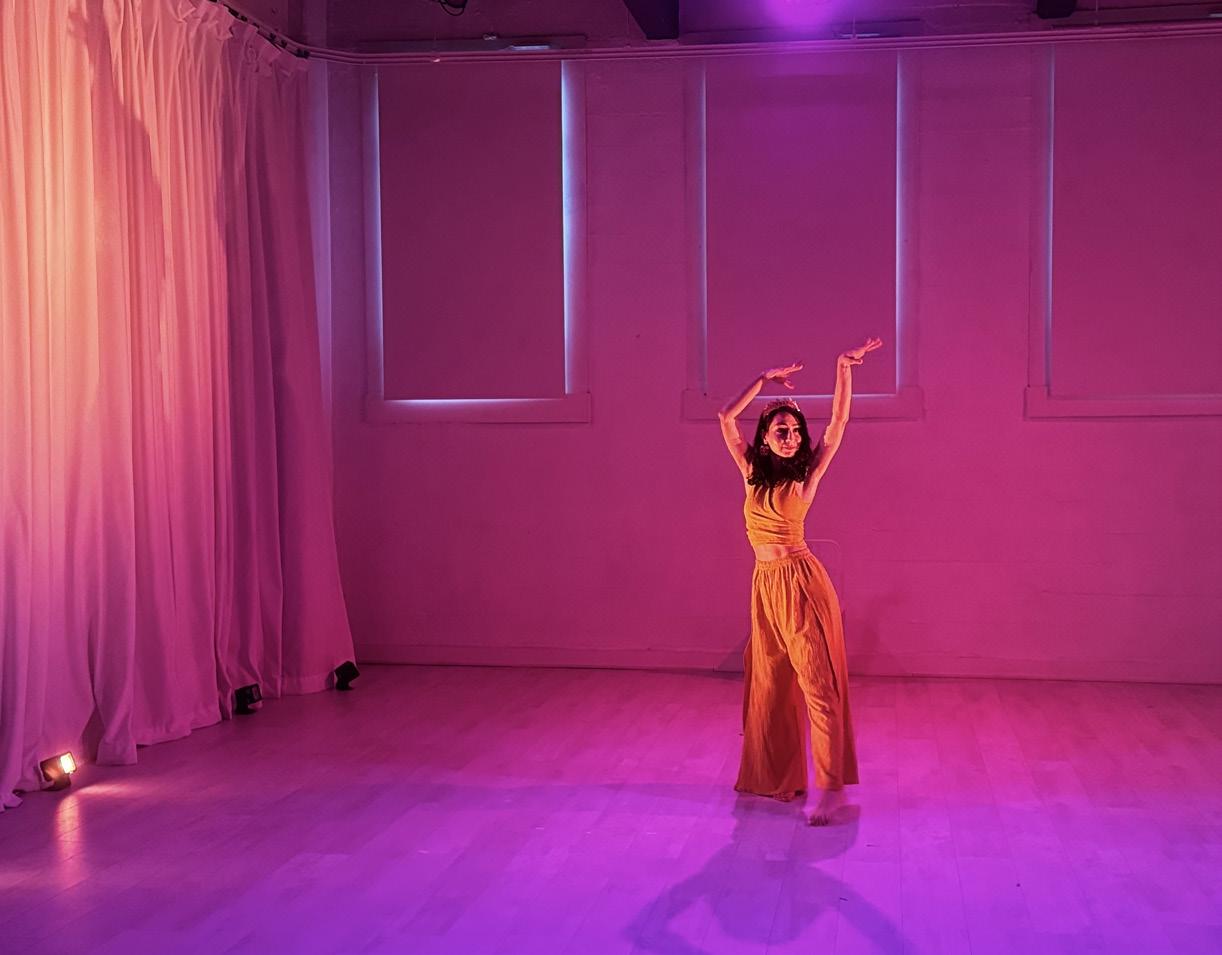
themes and experiences like alien and human duality, queer eroticism, appreciating nature, questioning life, grief, and death. I couldn’t help but think that the idea of returning to nature reminded me of pastoral poetry, which I wholeheartedly enjoy.
Next came Solomon, returning to read her poetry. She opened up with a poem called “Brown Girl Smoking Up,” which stunned me. Her poems touched on being far from home or never being able to return, meeting her mother for the first time, queerness, and climate change. Not only was she reciting her spoken word, but she also sang and used the loop-peddling, which truly drove it home for me; she has a commanding voice!
Finally, the last act of the show was from Panthea Vatandoost, who started off by handing out party hats to the audience. Hearing her say, “Welcome to my funeral party!” told me I was in for something amazing. Her performance was less poetry and more a conversation or a phone call with an old friend. As she moved around the room, Vatandoost talked about a range of topics — her grandma’s hands, death and its untimeliness, the idea of having an unfulfilled prophecy and bearing the weight of a legacy, and an endless cycle of indentured servitude. She finished her set with dancing and singing, looking ethereal.
The gallery itself was adorned with beautiful and intricate installations like a tea ceremony table, a shelf for different Asian snacks, a couple of shelves for selling handmade goods (cards, books, keychains, stickers, and more), and one installation that particularly caught my eye. This mixed media installation by Sauha Lee is titled “Your Intentions Walk Towards You,” and it explores “the way she confronts her heritage and ancestry.” The combination of different objects collected over time takes the form of a sort of shrine, with a big mix of melted candle ends sitting in the middle. Beneath lies three intention-holding weights, from which you write an intention down on paper and place it underneath one of the weights. If you have a chance, do not skip out on seeing a show at Morrow. Despite its small, intimate space, Morrow isn’t afraid to explore and expose the ajeeb in and of life!
10 ARTS & CULTURE Arts & Culture Editor Izzy Cheung arts@the-peak.ca
PHOTOS: YASMIN HASSAN / THE PEAK
Unveiling the festivity of the Sikh Nagar Kirtan in Surrey
The religious and cultural significance of the world’s largest Vaiskahi parade
AMRIT KAMAAL · PEAK ASSOCIATE
As a Surrey civilian, I wanted to shed light on one of the greatest celebrations that Sikhs share with the community, the Vaisakhi Nagar Kirtan parade. This parade takes place annually in the month of April, which is now recognized as Sikh Heritage Month by the BC government. Historically, Vaisakhi was only celebrated as a harvest festival primarily in Punjab and Northern India. However, Vaisakhi is now the most important day for Sikhs, as it marks the establishment of the birth of the Khalsa by the 10th Sikh Guru — Guru Gobind Singh Ji — in 1699. Although April has already passed, I’d like to reflect on the significance of this event to not only the Sikh community, but Surrey itself.
“Nagar Kirtan” means the chanting and “singing of Shabads (divine hymns)” from the Sikh Sangat — the congregation — throughout a neighbourhood, town, or suburb. The significance of this parade is to bring ourselves closer to Waheguru (God) by doing Seva (selfless service) through volunteering at stalls and connecting with the community, as well as reciting Gurbani, which refers to the various compositions by the Sikh Gurus.
The parade started at the Gurdwara Dasmesh Darbar, located in Surrey. It began with a moment of solidarity with Indigenous communities, as they led a welcome song as a sign of respect for the land being used, the unceded traditional territories of the Coast Salish peoples, including the Katzie, Kwantlen and Semiahmoo First Nations. The Nagar Kirtan started when the Panj Pyare (the five beloved ones) walked before the main float of the Sri Guru Granth Sahib Ji, which are the holy scriptures considered so significant to Sikhs that they are respected as the 11th living Guru.
Traditionally, when the Nagar Kirtan route is completed, the parade concludes as soon as the Guru Granth Sahib Ji returns to the Gurdwara. As this is happening, the Ardas (concluding prayer) will begin playing on the loudspeakers and all of the Sadh Sangat — company of the Holy — will stand up with their hands joined together and heads covered.
At this year’s parade, I saw a variety of colours in the cultural attire many of us prefer to wear, mostly navy blue and orange, which are known as the colours of Sikhi. From each corner, I could hear the sweet sounds of Kirtan, performed by local Sikh students and on the loudspeaker, as well as Katha — which is verbal preaching of the Gurbani and the historical stories of our background. The Sikh Nagar Kirtan encourages people of all races, religions, and cultural backgrounds to partake in the festivities by enjoying the free food and visiting the stalls of many organizations and performances. This is because Sikhs view all

My favourite thing about this parade is how most of the Lower Mainland will join in on the festivities alongside us, showing great respect and interest in our cultural and religious traditions.
within the community as equal and the imposing of beliefs on others is prohibited. The only expectation is for participants to dress modestly and try to keep their head covered, as a way of showing respect for the holy celebration.
From childhood, I have very fond memories of checking out the various stalls in the parade with my family. Each time, I would leave with a balloon in my hand and a smile on my face. The
Nagar Kirtan holds deep significance to my family. We tend to arrive early and set up our stall outside of our family business, and also spend months in advance collecting chips and juice boxes to distribute to all the attendees.
My favourite thing about this parade is how most of the Lower Mainland will join in on the festivities alongside us, showing great respect and interest in our cultural and religious traditions. Especially in the past few years, I have seen many of my non-Sikh friends cover their heads with a Rumāl (a Sikh head covering that is a piece of cloth, similar to a bandana), enjoying the free food, and watching talent being displayed from our religion through Gatka (ancient form of martial arts) performances and Pagg (turban) tying stalls. This type of unity is very beautiful to see. Every participant I see has a smile on their face while partaking in one of our most crucial celebrations, even including other cultures to share their traditions with us as well. I hope that after reading this, readers will mark their calendars for the next annual Vaisakhi Nagar Kirtan.
Ninja Bubble Tea x Poké O My Tea Café
2972 Glen Dr., Coquitlam Sunday–Thursday, 11:00 a.m.–10:00 p.m. Friday–Saturday, 11:00 a.m.–11:00 p.m.
Ninja Bubble Tea x Poké provides an extensive selection of beverages and lunch options to cater to your cravings. Their customizable bowls offer a variety of options to ensure you can tailor your meal as per your choice, but what makes them most unique is their wide array of bubble tea selections, like their piña colada latte or Irish earl grey milk tea. If you are looking to save, they also have a happy hour offered every day from 9:00 p.m. to closing!
122-6820
O My Tea Café is an exceptional place for indulging in a delightful array of offerings including waffles, refreshing smoothies, and the exquisite Korean shaved ice known as Bingsu. Their waffles distinguish themselves by maintaining the perfect balance of a crunchy outside and a pillowy interior. Don’t miss out on their seasonal special offers which invite you to try your own personal-sized hotpot!
Fufú café is the perfect Japanese restaurant to satisfy all your dessert cravings. With their sweet and savory pancakes, Japanese sandos, pastries, and more, this spot has something for everyone. Their soufflé pancakes are irresistable, featuring a delightful combination of fluffy texture and flavours — you can get them with fruit, caramelized bananas, chocolate, matcha, and many more. This small café has a charming atmosphere, sporting marble tables adorned with tiny plants for you to sit and enjoy your day.
102 W Hastings
Vancouver
10:00 a.m.–6:00 p.m.
10:00 a.m.–7:00 p.m. Sundays, 11:00 a.m.–6:00 p.m.
Boba Run stands out as the ultimate destination for affordable and satisfying bubble tea experiences in Vancouver. This establishment goes above and beyond to offer more than just boba — their menu also features indulgent lattes, creamy shakes, and freshly brewed tea. Be sure to try their yin yang milk tea and the Assam black tea, as they are extremely rich in their malty flavours of tea and coffee. Whether you are craving the classic boba or other options, Boba Run serves something for every palate, making it a desirable place to try out.
11 May 27, 2024 ARTS & CULTURE
Fufú café
Boba Run
188 St., Surrey Sunday–Thursday, 11:30 a.m.–9:00 p.m. Friday–Saturday, 12:00 p.m.–9:30 p.m. 1266 W Broadway St., Vancouver Tuesday–Sunday, 10:00 a.m.–6:00
p.m.
St.,
Monday–Friday,
Saturdays,
Hidden Gems Dessert spots around the Lower Mainland
PRERITA GARG SFU STUDENT
PHOTO: AMRIT KAMAAL / THE PEAK
UNITY IN DIVERSITY
May 27–June 2
your weekly horoscopes
The stars know what song you should sing at karaoke

Aries March 21–April 19
“Mr. Brightside” by The Killers Listen, who are you trying to kid? You’re gonna show up to the bar insisting you’ll sing a different song, but you won’t. You’re a creature of habit, and the rest of us are just grateful that the song you repeatedly subject us to is at least a good one.

Cancer June 21–July 22
“Tequila” by The Champs Minimal lyrics and maximal time to show off all the extra dance moves your body only seems to remember when you have . . . wait for it . . . tequila!

Libra
September 23–October 22
“Papaoutai” by Stromae
You just got back from Paris so you’re basically French now right? Go prove it! Don’t forget to obnoxiously explain that the lyrics are not happy despite the upbeat music. Even though the huge hit is over a decade old, I’m sure no one at the bar knows this fun fact. Make sure to repeat it a lot to make extra friends who will be in awe of how cultured you are!

Capricorn
December 22–January 19
“Don’t Stop Believin’” by the Glee Cast Gather all your friends and sing like it’s the mid2010s. Reminisce about a time where you were too young to understand that Will Schuster’s behaviour was inappropriate and you thought acappella was this cool new thing!

Taurus April 20–May 20
“Making Love to the Vancouver Canucks” by Ivan Hrvatska
You can spend a glorious two minutes and 16 seconds living in an alternate universe where the Canucks are still in the running to win the Stanley Cup. I mean, where else are you going to wear that $200 jersey you only bought because you wanted to be a part of something?

Leo July 23–August 22
“Veggie Dance” by Gracie’s Corner
You spent half your rent buying vegetables at your local farmers market? They’ll probably go bad before you go through all of them? Time to throw it back while singing “I love my veggies!”

Scorpio
October 23–November 21
“MHMM” by Glorb ft. Sandy Thee Squirrel
A random Sunday at your local dive bar is the perfect time to embody Sandy from SpongeBob. Bonus points if you wear a diving suit while rapping about how “the baddest bitches live in bubbles.”

Aquarius
January 20–February 18
“Good Luck, Babe!” by Chappell Roan Compulsory heterosexuality and knowing when a song is above your vocal abilities are soooo out this summer. Gather all your sapphic friends and you can all get destroyed by those high notes together.

Gemini May 21–June 20
“Umbrella” by Rihanna
In so-called Vancouver, April showers only bring May showers. You’re walking into the bar with your hair dripping even though you spent an hour curling it before. Use your platform to remind everyone they cannot afford to forget their umbrella, ella, ella at home.

Virgo
August 23–September 22
Not “Not Like Us” by Kendrick Lamar
The stars do not care that you think you can rap after a couple Whiteclaws. You cannot. Get away from the mic and make sure you remind your non-Black friends that they still can’t say it.

Sagittarius
November 22–December 21
“Imagine” by John Lennon
In an era where people are very much still contracting and spreading COVID-19, it’s time to bust out your healing voice and sing “Imagine.” The world wasn’t ready in 2020, but today people love doing things that are ineffective to counter the spread of COVID-19.

Pisces
February 19–March 20
“Kingsgate Mall Tribute” by Ian Boothby and Vicky Van
This parody to the tune of Adele’s “Skyfall” is sure to be a crowd pleaser. Who doesn’t want to sing about the skunks at this beloved Mount Pleasant shopping destination?
13 May 27, 2024 HUMOUR
C ICART HUMOUR EDITOR ILLUSTRATION: MARISSA OUYANG / THE PEAK
































